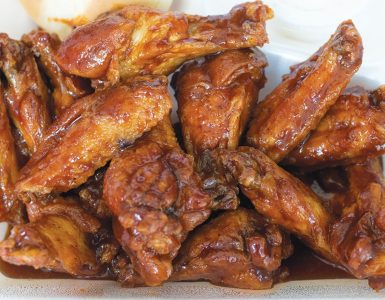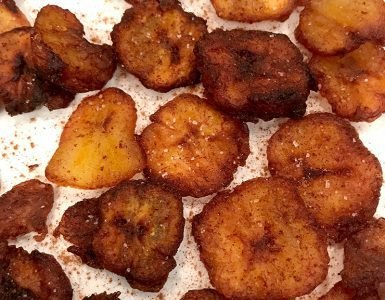Summer grilling safety is important … grilling is an activity shared with family and friends done outdoors almost year round. So whether the snow is blowing or the sun is shining brightly, it’s important to follow food safety guidelines to prevent harmful bacteria from multiplying and causing food-borne illness. Use these simple guidelines for grilling food safely.
From the store: Home first
Summer grilling is all about a good stock of ingredients. When shopping, buy cold food like meat and poultry last, right before checkout. Separate raw meat and poultry from other food in your shopping cart. To guard against cross-contamination — which can happen when raw meat or poultry juices drip on other food — put packages of raw meat and poultry into plastic bags.
Plan to drive directly home from the grocery store. You may want to take a cooler with ice for perishables. Always refrigerate perishable food within 2 hours. Refrigerate within 1 hour when the temperature is above 90 degrees Fahrenheit.
At home, place meat and poultry in the refrigerator immediately. Freeze poultry and ground meat that won’t be used in 1 or 2 days; freeze other meat within 4 to 5 days.
Thaw safely
Completely thaw meat and poultry before grilling so it cooks more evenly. Use the refrigerator for slow, safe thawing or thaw sealed packages in cold water. For quicker thawing, you can microwave defrost if the food will be placed immediately on the grill.
Marinating
A marinade is a savory, acidic sauce in which a food is soaked to enrich its flavor or to tenderize it. Marinate food in the refrigerator, not on the counter. Poultry and cubed meat or stew meat can be marinated up to 2 days. Beef, veal, pork, and lamb roasts, chops, and steaks may be marinated up to 5 days. If some of the marinade is to be used as a sauce on the cooked food, reserve a portion of the marinade before putting raw meat and poultry in it. However, if the marinade used on raw meat or poultry is to be reused, make sure to let it come to a boil first to destroy any harmful bacteria.
Transporting
When carrying food to another location, keep it cold to minimize bacterial growth. Use an insulated cooler with sufficient ice or ice packs to keep the food at 40 degrees Fahrenheit or below. Pack food right from the refrigerator into the cooler immediately before leaving home.
Keep cold food cold
Keep meat and poultry refrigerated until ready to use. Only take out the meat and poultry that will immediately be placed on the grill.
When using a cooler, keep it out of the direct sun by placing it in the shade or shelter. Avoid opening the lid too often, which lets cold air out and warm air in. Pack beverages in one cooler and perishables in a separate cooler.
Keep everything clean
Be sure there are plenty of clean utensils and platters. To prevent food-borne illness, don’t use the same platter and utensils for raw and cooked meat and poultry. Harmful bacteria present in raw meat and poultry and their juices can contaminate safely cooked food.
If you’re eating away from home, find out if there’s a source of clean water. If not, bring water for preparation and cleaning. Or pack clean cloths, and moist towelettes for cleaning surfaces and hands.
Summer grilling safety: Cook thoroughly
Cook food to a safe minimum internal temperature to destroy harmful bacteria. Meat and poultry cooked on a grill often browns very fast on the outside. Use a food thermometer to be sure the food has reached a safe minimum internal temperature.
MEATS
Cook all raw beef, pork, lamb and veal steaks, chops, and roasts to a minimum internal temperature of 145 degrees Fahrenheit as measured with a food thermometer before removing meat from the heat source. For safety and quality, allow meat to rest for at least three minutes before carving or consuming. For reasons of personal preference, consumers may choose to cook meat to higher temperatures.
GROUND MEATS
Summer grilling almost always means burgers. Cook all raw ground beef, pork, lamb, and veal to an internal temperature of 160 degrees Fahrenheit as measured with a food thermometer.
POULTRY
Summer grilling just isn’t the same without chicken, or yardbird. Cook all poultry to a safe minimum internal temperature of 165 degrees Fahrenheit as measured with a food thermometer.
Never partially grill meat or poultry and finish cooking later.
Safe smoking
Smoking is cooking food indirectly in the presence of a fire. It can be done in a covered grill if a pan of water is placed beneath the meat or poultry on the grill; and meats can be smoked in a “smoker,” which is an outdoor cooker especially designed for smoking foods. Smoking is done much more slowly than grilling, so less tender meats benefit from this method, and a natural smoke flavoring permeates the meat. The temperature in the smoker should be maintained at 250 to 300 degrees Fahrenheit for safety.
Use a food thermometer to be sure the food has reached a safe internal temperature.
Pit roasting
Pit roasting is cooking meat in a large, level hole dug in the earth. A hardwood fire is built in the pit, requiring wood equal to about 2½ times the volume of the pit. The hardwood is allowed to burn until the wood reduces and the pit is half filled with burning coals. This can require 4 to 6 hours burning time.
Cooking may require 10 to 12 hours or more and is difficult to estimate. A food thermometer must be used to determine the meat’s safety and doneness. There are many variables such as outdoor temperature, the size and thickness of the meat, and how fast the coals are cooking.
Does grilling pose cancer risk?
When summer grilling, those grill marks are what’s bringing fans back. Some studies suggest there may be a cancer risk related to eating food cooked by high-heat cooking techniques as grilling, frying, and broiling. Based on present research findings, eating moderate amounts of grilled meats like fish, meat, and poultry cooked — without charring — to a safe temperature does not pose a problem.
To prevent charring, remove visible fat that can cause a flare-up. Precook meat in the microwave immediately before placing it on the grill to release some of the juices that can drop on coals. Cook food in the center of the grill and move coals to the side to prevent fat and juices from dripping on them. Cut charred portions off the meat.
— USDA.gov












115 comments